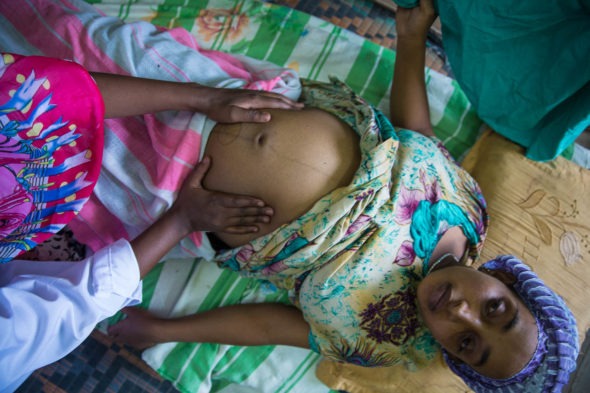

The video I shot for our film was the first time I used the Canon 5DM2’s video capability, and I was amazed at the quality results.
Maternal health issues in Ethiopia and other developing nations around the world are devastating to women. Help us take steps to provide medical training to local health officials, donations of materials, and medical attention to those countries that need it most.
Purchase the book here: http://stores.lulu.com/ethiopianwomen
Many thanks to David Maier’s Mt. Hood Community College Integrated Media class for taking on the design project, and to student Julia Art for her beautiful design work.
Today we go to see Mota, a rural bush area of Ethiopia where Dr. Andrew Browning, medical director of Bahirdar’s Fistula Center (a branch of the Addis Ababa Fistula Hospital), is trying to coordinate preventative surgical care of pregnant women who are laboring long hours or have other complications. Andrew arrives at our hotel with Dr. Rahel Nardos, the Ethiopian OB/GYN and resident Urogynecologist Fellow from Oregon Health and Sciences University (OHSU). They have worked together at the Bahirdar and Mota hospitals in the past, and while Rahel now works in Portland, Oregon, Andrew, by the grace of his own personal fundraising, works in Bahirdar and Mota.
They tell me that when a woman heavy labors for many days or weeks, several problems can arise. If the woman is lucky, she will eventually deliver a baby. Death is another common outcome. And there is yet another situation that is far less talked about: developing a fistula, where a hole is torn inside of the woman and her waste then comes out of her vagina. She constantly leaks urine and feces, and is most often shunned by her husband, family and village. She hides in a tiny corner and is embarrassed to emerge. She smells horribly, and her clothes are badly stained. She eats at night so that others do not see her.
Fistula repair surgery exists in several developing countries, but most families will not admit to the problem, nor can they easily walk hundreds of miles to the closest hospital, let alone transport the affected woman who often is very weak and cannot walk. If they do take on the exhausting trip to the hospital, they have no funds to pay for the repair surgeries.
Andrew, a spirited and kind Australian, nurtures a deep devotion to helping these women. He repairs fistulas at the Fistula Center, but he also sees the vital benefits of establishing surgical centers out in the rural areas so that Cesarean Sections can be performed and fistulas are prevented. The hospital at Mota has been constructed, the surgical rooms are ready, donated supplies are sitting in boxes. Yet there is one halting issue: getting doctors to be willing to work there. We walk along the corridors of the hospital and a sadness prevails as other Ethiopian doctors perform outpatient duties, passing the empty yet ready surgical rooms all day. Even sadder is when a woman shows up after laboring for weeks and there is nothing they can do for her.
Andrew relentlessly follows his course, and little by little, he makes progress. This June, several doctors from Holland will be arriving as a team to perform surgeries. Yet, when we face the hospital administrator at his desk and Andrew announces their commitment to coming, joy does not come easily. The administrator has heard this before, hopes have risen, and then doctors back out of the commitment to coming.
This time, Andrew believes the surgical team will follow through. The conversation then turns to preparation needs, such as establishing a steady supply of clean water and painting the guest houses. We ask how the Ethiopian people will trust that doctors will treat them if they come, and Andrew assures us that the bush communication is strong, and word will circulate quickly through the villages.
As we turn to leave, I hear moaning from behind a door. They let me go inside, and Rahel explains to a woman on a gurney that I am there to make images that might possibly help the hospital. We find out that she has been in heavy labor for three days. She nods her head yes – anything to help the needs of her sisters.